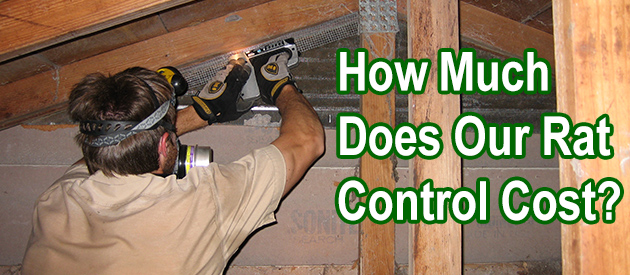Broward County, Fort Lauderdale Rat Control Situation:
The past month or so we hear noises over the kitchen table in the west end of the house that starts around dark and is all night. When I go to bed around two or three in the morning there are still noises. It sounds like the animal is trying to crack a pecan on the floor beams in the attic. The dining room, kitchen used to be the garage . A breezeway was added and a huge double garage added from the 'now' kitchen back door. My husband has trapped large 'rats' in the garage, NOT mice. We do have squirrels but my husband has kept them out of the pecan trees by sprinkling crushed red pepper around the trees. They do run the utitity lines. Our house has different roof angles. The orginal house roof is higher than the roof where the the dining room and kitchen is now. It is sealed off from the garage and the breezeway. The ceiling over the kitchen table is dropped about 10 inches. If the animal is coming in there it is going about 15ft to where the noise is coming from. Due to the economy we can not afford hundreds of dollars to an exterminator so any suggestions would be appreciated.
My response: You've got to find out how the rats are getting in, and seal those areas shut with steel.
Hi, We live in the newest housing area in Boca Raton Florida. Because they are turning over the soil next door and down the street, we are getting mice and some larger animals IN the HOUSE. They are coming in thru the garage and up the dryer vent into the second floor of our home. The home is over the garage. We noticed rat and animal traps by the garages but NO ONE has been around to maintain them recently. Please can you check on the traps outside and what can you suggest we do for the inside of our home. It is a real discomfort. Thanking you in advance for assisting us in this important matter. Suzanne
Fort Lauderdale Rat Control Tip of The Week
Dealing With A Rat Infestation In Your Attic
Black Rats are small rodents that are common in almost all areas across the United States, and because of their smaller size they are considered to be less of a threat and a pest than Norway rats, their larger cousins. However, rats also carry a range of different diseases and can also pose a health risk to you and your family, so if you do find an infestation, it is worth dealing with is promptly. Rats are also good climbers, so finding them nesting in your attic is not uncommon.
Identifying That You Are Dealing With Rats Rather Than Other Pest Animal Species
The first step to dealing with an infestation is to ensure you are dealing with rats, as the sounds of scratching from the attic can sometimes be other animals such as rats, squirrels or even raccoons. The best way of identifying that it is rats you are dealing with is to check on any rat feces that you can find. These small pellets of poop should be significantly smaller than rat droppings, and will be around the size of a small grain of rice, and is black when fresh, turning brown and then grey after some time.
Precautions Before Carrying Out Rat Control Work
Going into a confined space where pest animals are present can be dangerous as there are often diseases that can be transmitted by rats. Wearing long sleeved clothing and gloves will help protect you from any nips from animals and also prevent direct contact with feces of urine. Another smart precaution is also to wear goggles and a breathing mask, as some diseases transmitted by rats can become airborne, and can then prove to be a dangerous problem if those airborne particles are then inhaled.
Laying Traps To Catch Rats
By far the most common and affordable way of dealing with a rat infestation in the attic is to lay traps to catch the little animals. The standard snap traps on a wooden base are cheap to buy and just as effective as more expensive options, and can be re-used, which is particularly useful if you have a larger rat infestation to deal with. When laying traps in the attic, make sure to lay them near the areas where you see the greatest buildup of rat feces, and also near any entry points they may be using to get in and out.
Removing Carcasses And Monitoring The Rat Problem
Once you have laid the traps, the next step is to monitor all of the traps over the next few days, to see how effective the traps are at dealing with the problem. With any rat carcass, you can simply bag it and place it in the garbage, or it can also be incinerated as well if you have the facility. Keep re-setting the traps and continue to monitor until you are no longer seeing any signs of rat activity and you are no longer catching any rats in your traps.
Repairs Required After A Rat Infestation
The key step to take after catching and dealing with all of the rats is to seal the attic, as they will often have several entry points to help them get in and out of the area. These should all be sealed using metal flashing or a suitable filler to prevent other rats from being able to get back into the area again. You should also try to remove any feces that you can, and if insulation is heavily soiled then that should also be replaced. One wise precaution is also to fumigate the attic after your repairs, to kill off any remaining bacteria or other particles that could be harmful to anyone going into the attic in the future.


